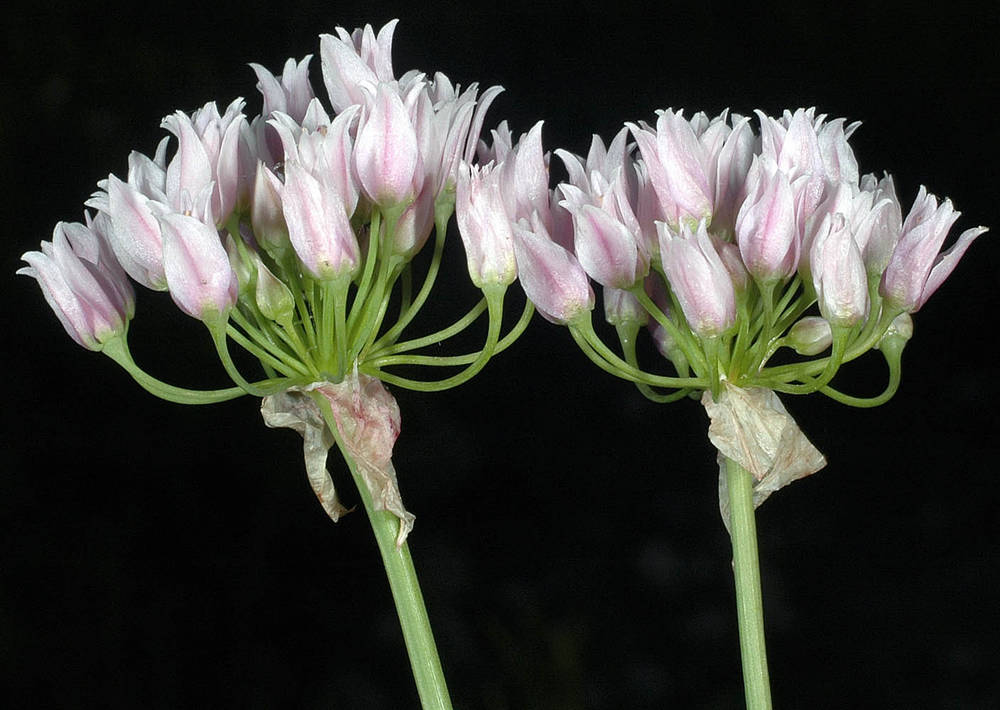Allium geyeri
Allium falcifolium
Geyer's onion
sickle-leaf onion
2–10+; ovoid or slightly elongate;
outer coats enclosing 1 or more bulbs, reticulate;
cells rather coarse-meshed; open, fibrous.
1–5+;
rhizomes absent; increase bulbs absent or more or less equaling parent bulbs, never appearing as a basal cluster; ovoid;
outer coats enclosing renewal and increase bulbs, membranous, lacking cellular reticulation or cells arranged in only 2–3 rows adjacent to roots; more or less quadrate; without fibers.
persistent, usually green at anthesis, usually 3–5;
blades solid; more or less straight; flat, channeled; (6)12– 30 cm × 1–3(5) mm.
usually deciduous with scape, withering from tip at anthesis, 2;
blades solid; flat, falcate, 8–21 cm × 2–8 mm.
persistent; solitary; erect; terete or somewhat 2-angled, 10–50 cm × 1–3 mm.
usually forming abscission layer and deciduous with leaves after seeds mature; solitary; erect; solid, strongly flattened, winged distally, 5–25 cm × 1–4 mm.
persistent; erect; compact, 10–25-flowered, hemispheric to globose, not producing bulbils, or 0–5-flowered, largely replaced by ovoid, acuminate bulbils;
pedicels becoming rigid and stiffly spreading in fruit, 8–13 mm;
spathe bracts 2–3.
persistent; erect; compact to more or less loose, 10–30-flowered, hemispheric;
pedicels 8–15 mm;
spathe bracts 2.
(4)6–8(10) mm;
tepals erect or spreading; ovate to lanceolate; more or less equal, pink to white;
margins often obscurely toothed;
apex obtuse to acuminate;
stamens included;
ovary when present, inconspicuously crested with 3–6 low processes;
stigma unlobed or obscurely lobed.
9–15 mm;
tepals erect, lanceolate; more or less equal; reddish purple or dingy white; at least inner margins denticulate;
apex long-acuminate;
stamens included;
ovary crested with 3 low processes;
stigma unlobed.
=14.
Allium geyeri
Allium falcifolium
2 varieties.
Heavy, rocky, clay soils, usually serpentine, rocky openings to savanna. Flowering Apr–Jun. 200–1700 m. Casc, Sisk. CA. Native.
Nick Otting, Richard Brainerd, Barbara Wilson
Nick Otting, Richard Brainerd, Barbara Wilson
- Local floras:
BC,
OR,
WA
- Local Web sites:
Flora NW,
PNW Herbaria
WildflowerSearch
iNaturalist (observations)
USDA Plants Database
- LBJ Wildflower Center
- SEINet
- Plants of the World Online
- Encyclopedia of Life
- Wikipedia
- Google Image Search





